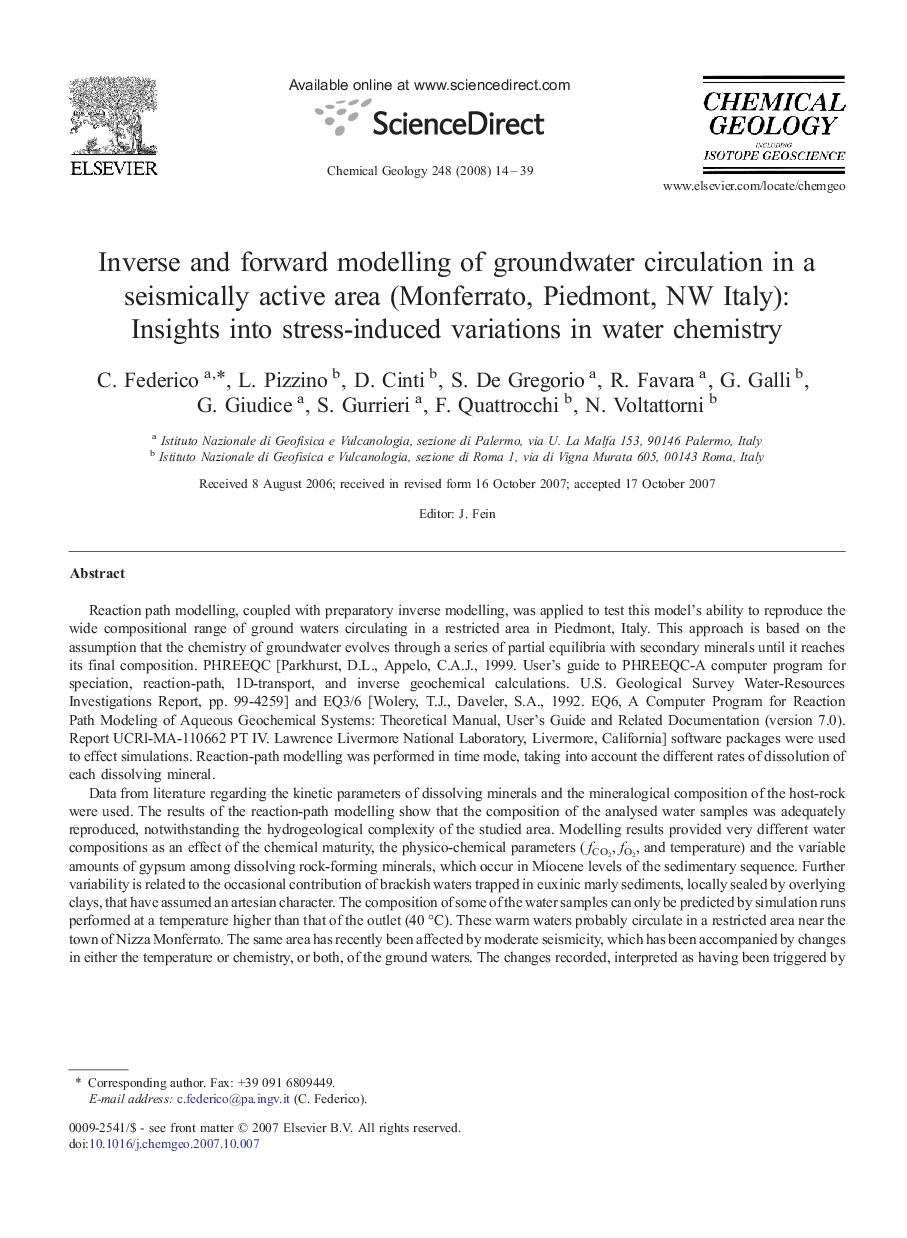| Article ID | Journal | Published Year | Pages | File Type |
|---|---|---|---|---|
| 4700832 | Chemical Geology | 2008 | 26 Pages |
Reaction path modelling, coupled with preparatory inverse modelling, was applied to test this model's ability to reproduce the wide compositional range of ground waters circulating in a restricted area in Piedmont, Italy. This approach is based on the assumption that the chemistry of groundwater evolves through a series of partial equilibria with secondary minerals until it reaches its final composition. PHREEQC [Parkhurst, D.L., Appelo, C.A.J., 1999. User's guide to PHREEQC-A computer program for speciation, reaction-path, 1D-transport, and inverse geochemical calculations. U.S. Geological Survey Water-Resources Investigations Report, pp. 99-4259] and EQ3/6 [Wolery, T.J., Daveler, S.A., 1992. EQ6, A Computer Program for Reaction Path Modeling of Aqueous Geochemical Systems: Theoretical Manual, User's Guide and Related Documentation (version 7.0). Report UCRl-MA-110662 PT IV. Lawrence Livermore National Laboratory, Livermore, California] software packages were used to effect simulations. Reaction-path modelling was performed in time mode, taking into account the different rates of dissolution of each dissolving mineral.Data from literature regarding the kinetic parameters of dissolving minerals and the mineralogical composition of the host-rock were used. The results of the reaction-path modelling show that the composition of the analysed water samples was adequately reproduced, notwithstanding the hydrogeological complexity of the studied area. Modelling results provided very different water compositions as an effect of the chemical maturity, the physico-chemical parameters (fCO2, fO2, and temperature) and the variable amounts of gypsum among dissolving rock-forming minerals, which occur in Miocene levels of the sedimentary sequence. Further variability is related to the occasional contribution of brackish waters trapped in euxinic marly sediments, locally sealed by overlying clays, that have assumed an artesian character. The composition of some of the water samples can only be predicted by simulation runs performed at a temperature higher than that of the outlet (40 °C). These warm waters probably circulate in a restricted area near the town of Nizza Monferrato. The same area has recently been affected by moderate seismicity, which has been accompanied by changes in either the temperature or chemistry, or both, of the ground waters. The changes recorded, interpreted as having been triggered by variations in the local/regional stress load and/or seismic activity, have to be ascribed to the vertical heterogeneity of the aquifers, where waters of different temperature, salinity and chemical composition circulate and occasionally mix.
